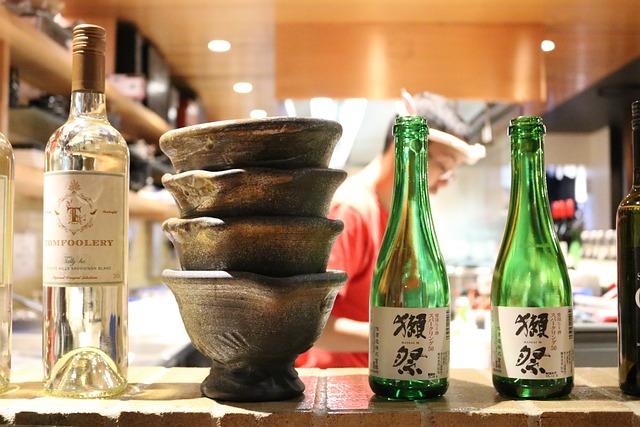Becoming a Sake Educator: Sharing Your Passion and Knowledge with Others
As the popularity of sake continues to grow, so does the need for passionate individuals who can educate and inspire others about this ancient and captivating beverage. Becoming a sake educator is not only a rewarding career but also a way to preserve and promote the rich cultural heritage that surrounds sake.
In this article, we will explore how sake education options impact the industry and how the Sake School of America can help individuals deepen their understanding and appreciation of sake. Join us on a journey of discovery as we uncover the mesmerizing world of sake and the impact of sake educators.
Understanding the Rich Cultural Heritage
Sake, often referred to as Japan’s national beverage, has a long and fascinating history that is deeply intertwined with Japanese culture. To truly appreciate sake, one must understand its origins, production processes, and cultural significance.
Sake educators play a crucial role in preserving this rich heritage by imparting their knowledge and passion to others. By sharing the stories and traditions behind sake, educators ensure that this cultural treasure continues to thrive and resonate with enthusiasts around the world.
Our journey begins in ancient China, where rice fermentation originated. This process was brought over to Japan with rice cultivation techniques over 2500 years. The first mention of sake in Japan is from as early as the 3rd century AD, though the exact origins remain unknown.
The Early Beginnings of Sake
Sake was not always as we know it today. Originally a thick, gruel-like beverage consumed by both commoners and nobles alike, it transformed into something more recognizable with time.
In Japan around 689 AD, under the Imperial Court’s reign, they established a sake brewing division. This pivotal move further ingrained sake within Japanese culture and elevated its production to an art form.
Evolution of Sake Brewing Techniques
A significant development in this evolution was incorporating mold or koji for fermentation – a technique still used in modern-day sake production. Koji introduces enzymes that break down rice starches into sugars ready for yeast consumption which is another key player responsible for alcohol formation during the brewing process.
Sake originated from ancient China and arrived in Japan about 2500 years ago; the first record mentioning sake dates back to the third century AD; the Imperial Court set up a dedicated department for brewing this beloved drink around the year 689.
The Sake School of America: Your Gateway to Sake Education
For individuals who aspire to become sake educators or deepen their knowledge, the Sake School of America offers a range of comprehensive certification programs and resources. These programs are designed to provide students with a deep understanding of sake production, history, tasting techniques, and food pairings.
Whether you are a seasoned professional or a passionate enthusiast, the Sake School of America offers a pathway to further your sake education and develop the skills needed to share your knowledge with others. Attending seminars and workshops organized by the school can also be a valuable way to network with industry experts and expand your understanding of sake’s diverse flavors and styles.
The Role and Impact of a Certified Sake Educator
As the popularity of sake continues to grow globally, certified sake educators have become key figures in preserving and promoting this rich cultural heritage. Their role is multifaceted, encompassing not just imparting knowledge but also inspiring an appreciation for all aspects of this traditional Japanese beverage.
Fostering Deeper Appreciation for Sake
Sake educators act as bridges between tradition and modernity. They’re well-versed in both history and current trends within the sake community. By providing a comprehensive understanding of production methods, styles, pairing suggestions, or serving etiquette, they transform casual drinkers into true connoisseurs.
With this educational guidance, educators help individuals develop a deeper appreciation for the complexities and nuances of sake, elevating their enjoyment and understanding of this remarkable beverage.
Apart from sharing their extensive knowledge during tastings or lectures, these professionals are often involved in industry events such as trade shows or seminars where they represent producers or importers. Through these activities, they actively contribute to shaping public opinion on quality sakes around the world.
Through tasting sessions, hands-on workshops, and interactive experiences, sake educators encourage individuals to explore different sake varieties, understand the impact of production techniques, and appreciate the harmony between sake and Japanese cuisine.
But there’s more than just professional duties. Being a sake educator means carrying out an important mission: preserving one of Japan’s most significant cultural assets while introducing it to new audiences worldwide.
Preserving and Promoting a Cultural Heritage
Sake educators not only contribute to the development of knowledgeable consumers but also play a crucial role in preserving and promoting the cultural heritage associated with sake. By fostering an understanding and appreciation for sake’s historical significance, traditional brewing methods, and regional variations, educators ensure that this ancient tradition continues to be celebrated and passed down through the generations.
Sake education goes beyond appreciation; it becomes an essential part of safeguarding the legacy of sake and its cultural importance on a global scale.
Enhancing Your Knowledge with Advanced Sake Tasting Techniques
Tasting sake is not just about drinking. Tasting sake is an art, a scientific process, and above all else, a sensory voyage that takes you through Japan’s rich cultural milieu.
Sophisticated sake-tasting techniques, like blind tasting and guided sample analysis, can dramatically elevate your understanding of this revered Japanese beverage. Blind tasting, for instance, lets you focus solely on the taste without being influenced by the brand or type of sake.
The Role of Guided Sample Analysis in Sake Tasting
A guided sake samples analysis helps unravel layers of flavors embedded within each sip. The more you taste under guidance, the better your palate becomes at identifying subtle notes.
You begin to understand key elements such as umami (savory flavor), sweetness levels, and acidity which play pivotal roles in shaping the overall profile of different sakes.
Nailing Down Your Technique: The Path to Mastery
To become proficient in these advanced methods, one must continue to practice. But remember – practice doesn’t make perfect if it’s done incorrectly.
Your aim should be to build consistency while keeping bias out; much easier said than done.
Conclusion
As the sake industry continues to expand, the need for dedicated sake educators becomes increasingly important. By embarking on a journey of sake education through programs like those offered by the Sake School of America, individuals can not only deepen their own understanding and appreciation of sake but also have a profound impact on the sake community at large.
By preserving and promoting the cultural heritage surrounding sake, sake educators play a vital role in ensuring that this remarkable beverage continues to be cherished and celebrated around the world. Embrace the fascinating world of sake education and join the ranks of those sharing their passion and knowledge with others. Cheers to becoming a sake educator!


